Wind Driven Rain (1-way Vs. 2-way) DPM, Ansys Fluent CFD Simulation Training
$100.00 $50.00 Student Discount
In this project, wind-driven rain has been simulated, and the results of this simulation have been investigated.
Click on Add To Cart and obtain the Geometry file, Mesh file, and a Comprehensive ANSYS Fluent Training Video.To Order Your Project or benefit from a CFD consultation, contact our experts via email (info@mr-cfd.com), online support tab, or WhatsApp at +44 7443 197273.
There are some Free Products to check our service quality.
If you want the training video in another language instead of English, ask it via info@mr-cfd.com after you buy the product.
Description
Project Description
In this project, numerical simulation of wind-driven rain has been done using Ansys Fluent software. The purpose of this project is to investigate the movement of raindrops in wind conditions of 5 meters per second, which has been done in two ways, one-way DPM and two-way DPM. The diameter of the drops is 0.5 cm but in order to be seen better, they have been scaled in contours and animation.
Geometry & Mesh
The two-dimensional geometry of this project has been produced with Spaceclaim software. The length of the computational area is 20 m and its height is 10 m.
The meshing of this present model has been generated by Ansys Meshing software. The mesh grid is unstructured and the total cell number is 19741.
Wind-Driven Rain CFD Simulation
To simulate the present model, we consider several assumptions:
- The solver is pressure-based and transient.
- The present simulation is unsteady in terms of time.
- The gravity effect is equivalent to -9.81 m.s-1.
Here is a summary of the steps for defining the problem and its solution in the following table:
| Models | |||
| Viscous model | Spalart Allmaras | ||
| Discrete phase | on | ||
| particle treatment | unsteady particle tracking | ||
| material in injection | anthracite | ||
| particle type in injection | inert | ||
| injection type | group | ||
| Boundary conditions | |||
| Inlet | Velocity inlet | ||
| velocity magnitude | 5 m.s-1 | ||
| discrete phase BC type | reflect | ||
| Outlet | Pressure outlet | ||
| gauge pressure | 0 Pascal | ||
| discrete phase BC type | escape | ||
| bottom | Wall | ||
| wall motion | stationary wall | ||
| discrete phase BC type | trap | ||
| Solution Methods | |||
| Pressure-velocity coupling | simple | ||
| Spatial discretization | pressure | second-order | |
| momentum | second-order upwind | ||
| Modified turbulent viscosity | first-order upwind | ||
| Initialization | |||
| Initialization method | hybrid | ||
Wind-Driven Rain Results
According to the animation and speed and pressure counters, it is clear that solving this problem in the form of a one-way coupling was sufficient and there was no need to solve a two-way coupling. We know that in two-way couplings, the momentum effects of particles on the fluid are also calculated. Therefore, it has a much larger computational volume than one-way couplings, and in simulations where the number and size of particles are very large, these effects must be considered.
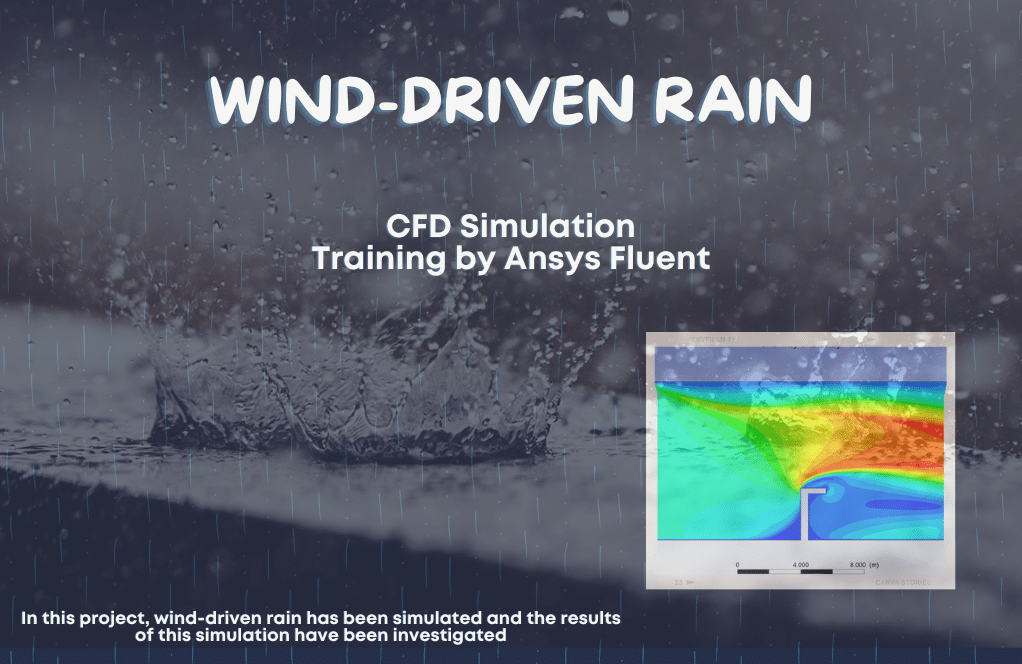

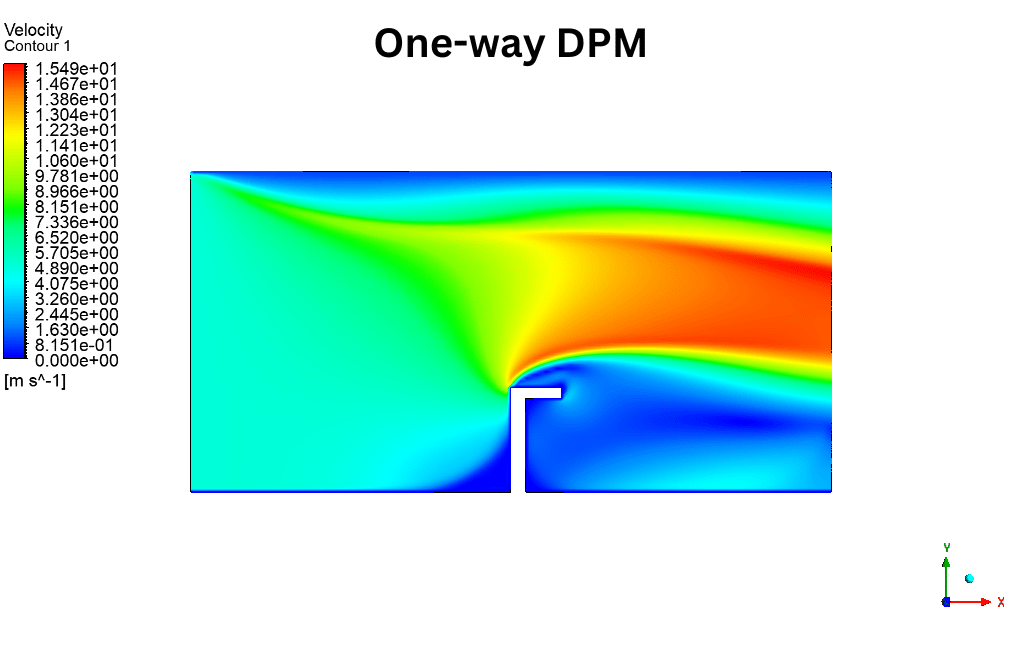
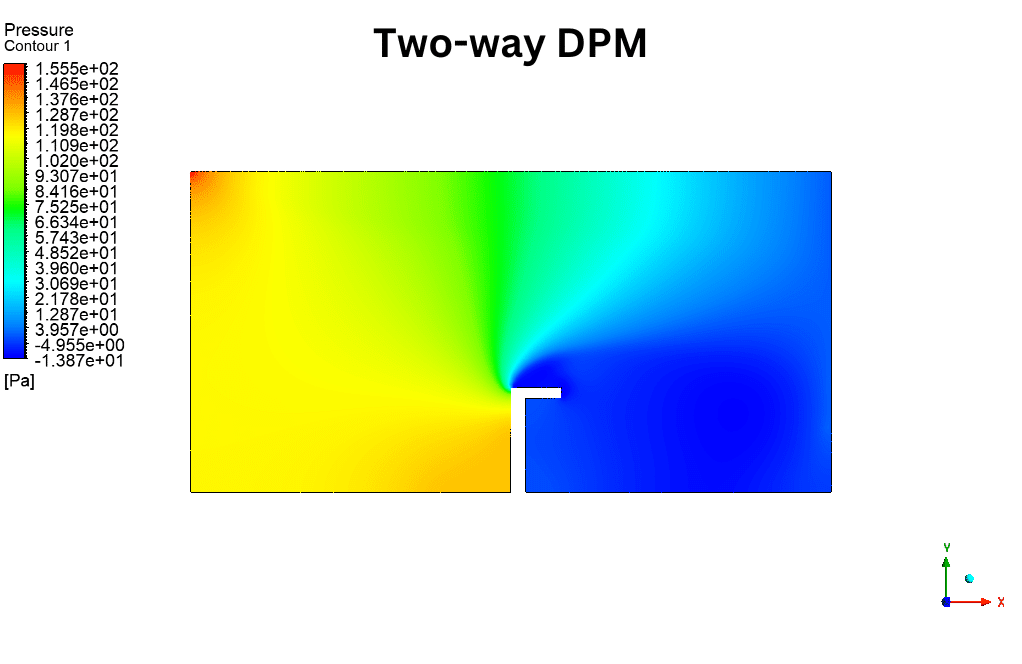
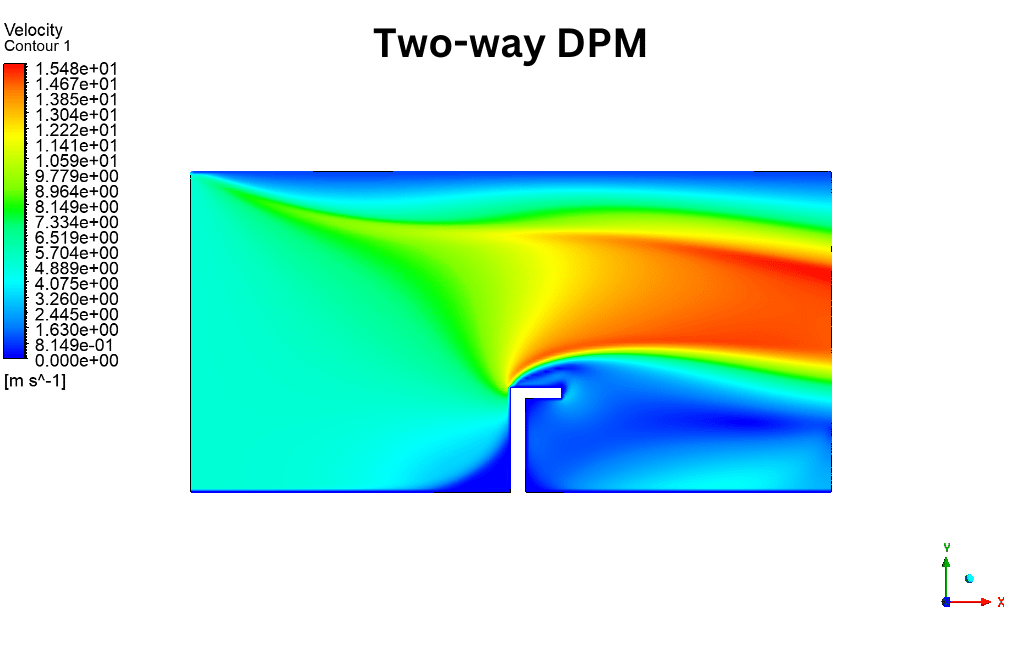
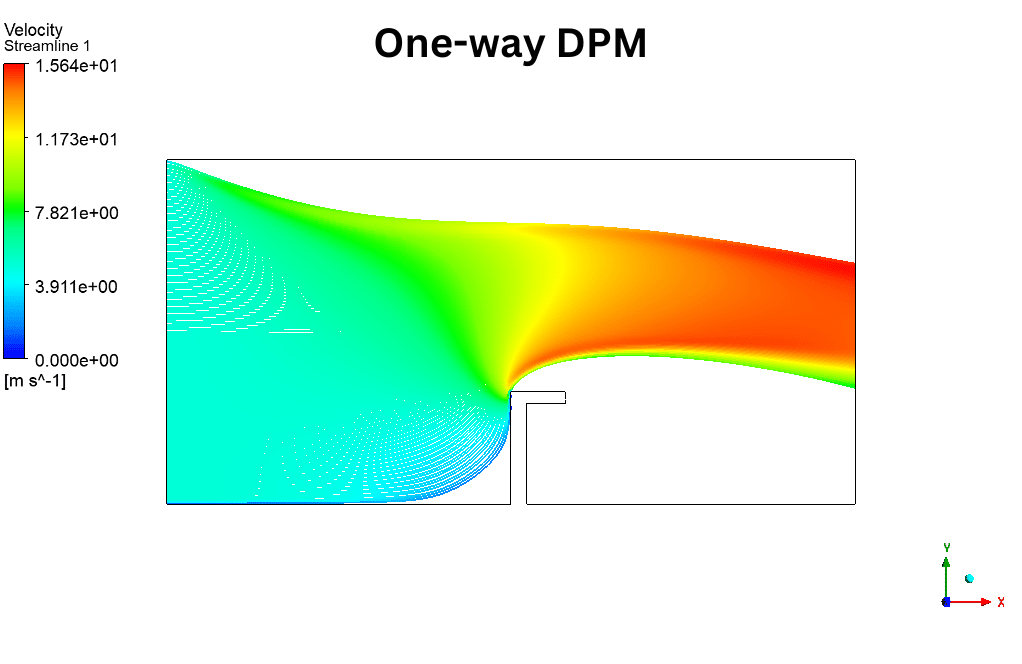
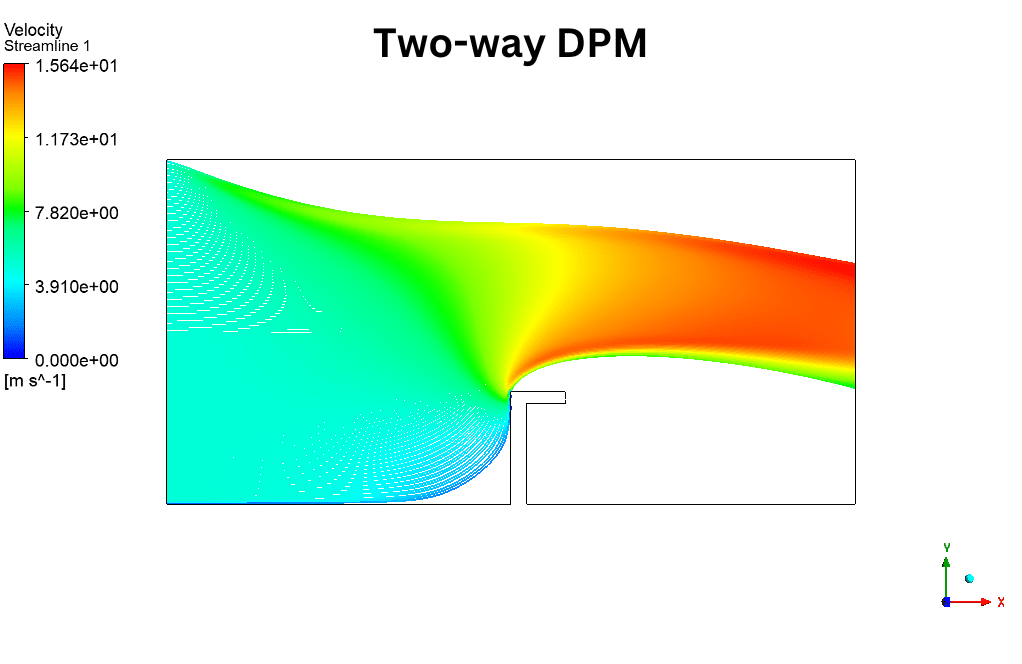

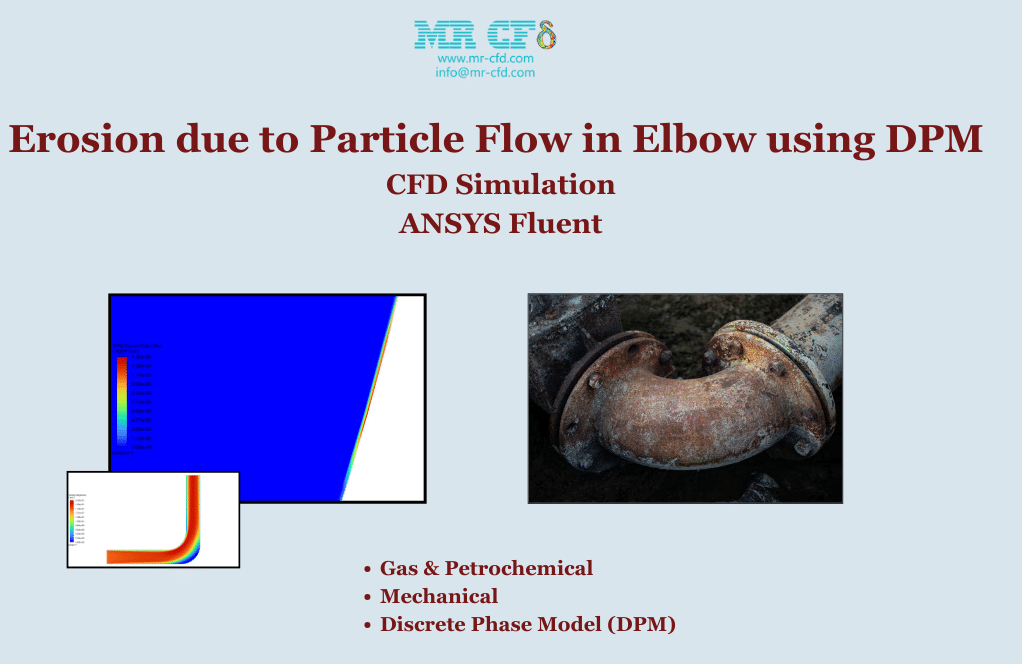
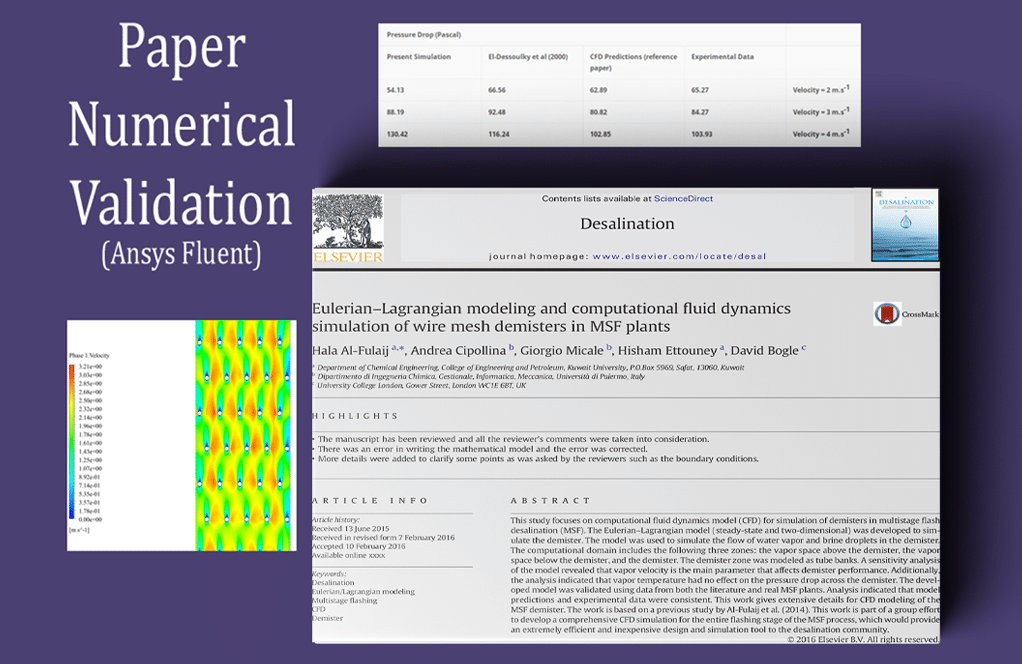

Lonny Lockman PhD –
The demonstration of wind driven rain dynamics in this simulation was absolutely fascinating. Watching how the raindrops interacted with the wind conditions was extremely insightful. The attention to detail in defining particle behavior and the animation of the droplets really enhanced the overall comprehension of the process. Excellent resource for understanding wind-driven phenomena in environmental studies and architectural planning.
MR CFD Support –
We’re thrilled to hear that you found the wind driven rain simulation insightful and helpful. It’s always our goal to provide detailed and accurate resources to foster understanding. Thank you for recognizing the animation and the efforts taken to define particle behavior. Your praise means a lot to us, and we appreciate you taking the time to leave a positive review!
Elisha Kshlerin Sr. –
I found the simulation fascinating, especially how it deals with the movement of raindrops influenced by wind. I’m curious to know if there is any visual representation included in the product to help grasp the concept better?
MR CFD Support –
Yes, the product includes visual representations, such as animations and contours, which are essential to understanding the simulation. They effectively illustrate the movement and interaction of raindrops with the wind that a mere textual explanation could not fully convey.
Hildegard Jaskolski V –
I really appreciated the clarity of the raindrop simulation process and the explanation of one-way DPM versus two-way DPM. The difference in computational demands was insightful. Thank you for the detailed breakdown!
MR CFD Support –
Thank you for your positive feedback! We’re very pleased to know that the explanation on the one-way DPM vs. two-way DPM, along with the focus on systemic computational demands, was helpful. If you have any further queries about CFD simulations, feel free to reach out to us!
Kariane McGlynn –
This training material helped me visualize the impact of raindrops in various wind conditions perfectly. The distinction between one-way and two-way DPM was especially enlightening.
MR CFD Support –
We’re thrilled to hear our Wind Driven Rain (1-way Vs. 2-way) DPM, Ansys Fluent CFD Simulation Training provided such valuable insights! Your appreciation motivates us to continue delivering high-quality educational content. Thank you!
Dr. Makenzie Kris II –
Really impressed with the details covered in this CFD simulation training! The scaling of raindrops helped visualize the phenomena clearly. The animations and contours were descriptive and the choice of one-way DPM for sufficient results was a smart decision to optimize computation time.
MR CFD Support –
Thank you for your positive review! We’re thrilled that the visualization and efficient use of the one-way DPM in the wind-driven rain simulation helped in understanding the complex interactions. Our team works hard to provide informative and practical learning experiences. If you need any additional assistance or further questions, feel free to reach out!
Dr. Colt Hills DDS –
I’m really interested in how the simulation reflects real-life scenarios. Could you elaborate on how the one-way DPM compares to the two-way DPM in terms of accuracy in situations where the wind and rain interaction is crucial?
MR CFD Support –
In real-life scenarios where interaction between the wind and rain is a key factor, a two-way DPM analysis might prove to be more accurate because it accounts for the feedback of the particles on the airflow. However, for raindrops – as in our case with a a velocity of 5 meters per second and diameter of 0.5 cm – a one-way DPM is sufficiently accurate, as the momentum exchange between the droplets and air is minimal. The choice really depends on the specific scenario and the importance of accounting for the momentum effects of the droplets on the wind flow.
Candelario Eichmann –
I am amazed by how comprehensive this wind-driven rain simulation training is and particularly how the choice between one-way and two-way DPM is elaborated. This clarity has certainly deepened my understanding of the subject.
MR CFD Support –
Thank you for your kind words! We’re thrilled to hear that our Wind Driven Rain CFD Simulation Training has helped enhance your understanding of DPM simulations. Your feedback is greatly appreciated!”} json_write ‘{
Jalen Gulgowski –
The training material seems comprehensive. I am looking forward to visually seeing how the raindrops interact with the wind in the simulation. Can we track different sizes of raindrops other than the 0.5 cm diameter mentioned?
MR CFD Support –
Absolutely! In Ansys Fluent, raindrops of different sizes can be simulated by using the Discrete Phase Model (DPM) settings. You can set up multiple injections with different diameter sizes to track and analyze how raindrops of varying dimensions interact with the wind flow.
Vernie Spinka –
The simulation’s explanation is very clear. Well done on showing the differences between one-way and two-way DPM approaches. The animations provided with the training are especially helpful in visualizing the raindrop movement – it makes understanding the concepts much easier for beginners.
MR CFD Support –
Thank you for your feedback! We are delighted to hear that you found the animations helpful and that the distinction between one-way and two-way DPM methods was made clear. We strive to provide detailed and user-friendly materials, so it’s great to know that our efforts are resonating with our customers.
Anna Rippin –
I am impressed with the detailed approach for simulating wind-driven rain, especially the choice of DPM and the reasoning behind one-way versus two-way coupling. Nicely done!
MR CFD Support –
Thank you for your kind words! We’re delighted to hear that you found the simulation approach for the wind-driven rain insightful and understandable. We take pride in providing clear explanations and choices in our training that best fit the simulation needs. If you have any more thoughts or need further clarification on CFD simulations, we’d love to hear from you!
Erna Anderson –
The training clearly demonstrates one-way versus two-way DPM simulations. Does the content also show how to set up a Spalart Allmaras viscous model within ANSYS Fluent for this type of simulation?
MR CFD Support –
Yes, the training includes guidance on setting up the Spalart Allmaras viscous model for this wind-driven rain simulation using one-way and two-way DPM approaches in ANSYS Fluent. The viscous model is integral to accurately predict the aerodynamic flow field which affects the raindrop trajectories.
Friedrich Boyer –
The training was exceptional in demonstrating the different DPM methods. I want to ensure I correctly apply this to urban environments. Does the model account for buildings and other structures that would influence the wind and rain distribution, or do we have to modify the geometry for each new scenario?
MR CFD Support –
This CFD simulation focuses on a simplified open environment to study the behavior of wind-driven rain without specific urban structures. To adapt the model for urban environments, one should modify the geometry to include buildings and other obstacles that would affect wind patterns and raindrop distribution. The methodology provided can be used as a basis for more complex scenarios by adjusting the computational domain and boundary conditions accordingly.